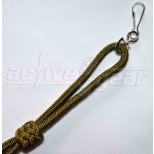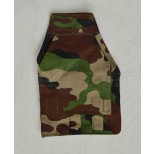Product Description
Berets are worn as part of the uniforms of many military, cadet and police forces worldwide. It is not uncommon for civilian organisations to adopt the beret to form a part of their uniform as well as by of their everyday wear. Military berets were first adopted by the French Chasseurs Alpins in 1889. After seeing these during World War I, British General Hugh Elles proposed the beret for use by the newly-formed Royal Tank Regiment which needed headgear that would stay on while climbing in and out of the small hatches of tanks. They were approved for use by King George V in 1924. The black Royal Tank Regiment beret was made famous by Field Marshall Montgomery in World War II. Berets have become the default military headdress of the late 20th and early 21st centuries.
Berets have features that make them very attractive to the military; they are price efficient, easy to manufacture in large numbers, can be manufactured in a wide range of colours, can be rolled up and stuffed into a pocket or beneath the shirt epaulette without damage and can be worn with headphones (this is one of the reasons why tank crews adopted the beret). Berets typically feature leather, silk or cotton ribbon, sometimes with a drawstring allowing the wearer to tighten the hat. The drawstrings are according to custom, tied and cut off or tucked in. The beret is not so useful in field conditions for the modern infantryman who requires protective support for the head. Modern urban combat with more sophisticated weaponry calls for the deployment and use of hard helmets to offer all round protection for the head. Berets therefore have been relegated to ceremonial or every day wear for the modern combat soldier or infantry officer.
Point to note that the United States’ Special Forces- ‘The Green Berets’, new army organization that was specially trained for insurgency and counter-guerrilla warfare began wearing a variety in 1953 hence the name and it was approved by President John F. Kennedy. Armoured units wear them to hide grease.
In the Caribbean, many defence forces wear various colours for specific units or battalions as a means of differentiating themselves. The Jamaica Defence Force has endorsed 4 colours; black / Navy Blue worn by First Battalion Jamaica Regiment, Second Battalion Jamaica Regiment, 1 Engineer Regiment, Workshop and Support and Service Battalion; the Sky Blue beret is worn by the Air Wing very similar to the Royal Air Force in the United Kingdom and green is worn by the Third Battalion Jamaica Regiment (National Reserve). The Jamaica Combined Cadet Force wears only the black / navy blue beret which is worn by cadets, adult ranks and officers. In the JCCF, there is no distinction as far as berets are concerning, one Battalion from the other. It can be worn with the work dress, service dress and ceremonial dress for adult instructors and officers; for cadets, adult ranks and officers, the beret is also worn with the NO. 4 dress (Green Denim). The Trinidad and Tobago Defence Force has three colours, the green, red and black.
Additional Information
| size | N/A |
|---|
You may also be interested in the following product(s)
-

Plain Lanyard
$11.99 -

Armlet or Brassard
$3.33




